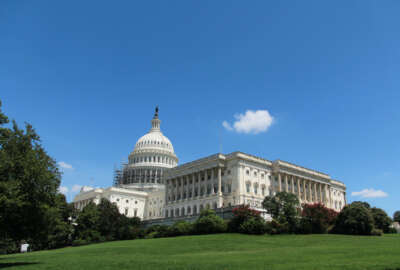The 10 biggest errors federal employees make
We look at the 10 biggest mistakes feds make when planning for retirement according to registered employee benefit consultant, Ed Zurndorfer.
wfedstaff | June 3, 2015 9:03 am
By Suzanne Kubota
Senior Internet Editor
FederalNewsRadio.com
We all make mistakes, but some are more costly than others. Ed Zurndorfer, registered employee benefit consultant, talked with Federal News Radio about the 10 Biggest Mistakes Federal Employees Make When Planning for Retirement (and How to Avoid Them).
Presented below is Zurndorfer’s list with a few excerpts from his comments about them. Listen to the audio above for the complete interview and see his article, linked above, for full details. Zurndorfer notes his “list is not in any particular order of importance or priority.”
Mistake #1: Failure to carefully review personnel records. Zurndorfer said to check your Official Personnel Folder (OPF) for Form SF 50 (Notice of Personnel Action) “and on that form are two very important pieces of information.” First is your retirement plan (box number 30). Make sure you’re in the right plan. Second, be sure to check the information in box 31, the “Service Computation Date.” This “will determine when an employee can retire,” based on time in service and age. This is not the place you want to be surprised later.
Mistake #2: Failure to make timely requests estimates of unpaid deposits or redeposits. Military service time can be applied, or “deposited” which makes it possible to retire earlier “and more important,” said Zurndorfer, “get a higher annuity because they have more years of service.”
Mistake #3: Failure to fill out and if necessary, update beneficiary designations. Zurndorfer lists the forms which should be filled out and updated if the employee gets married or divorced, etc. Too many feds put this off, said Zurndorfer. Don’t. “It doesn’t cost anything, it’s painless. It’s just a matter of filling out the form.”
Mistake #4: Failure to understand the rules for maintaining federal health insurance (FEHB) during retirement. “What many employees are not aware of,” said Zurndorfer, “are there the specific rules” to carry health insurance into retirement. He stressed the requirement for feds to participate in the FEHBP for the five years of service immediately preceding retirement.
Mistake #5: Failure to contribute as much as possible to the Thrift Savings Plan (TSP) and starting during the earlier years of an employee’s federal service. The key idea here is “as much as possible,” but Zurndorfer stressed the importance of contributing at least enough to get the maximum amount of matching funds.
Mistake #6: Failure to consider the TSP as a “long-term” investment plan and properly investing as such in the TSP funds. “A TSP account must continue to grow after an employee’s retirement date,” writes Zurndorfer. He adds “a TSP account is not a savings account. You don’t take money in and out of there to pay your expenses.”
Mistake #7: Failure to plan for “incapacity” while employed and when retired. Zurndorfer points out “there’s a far greater chance that an employee” who’s at the beginning or middle of their career will be incapacitated “than they are going to die, but yet most employees have life insurance.” The question becomes how bills will be paid when sick leave runs out. Zurndorfer said long and short term insurance is cheaper to buy when the employee is young.
Mistake #8: Failure to have a proper and up-to-date estate plan. Even in you’ve done planning in the past, said Zurndorfer, “laws do change and employees and retirees are encouraged to have their documents up to date.” Especially important, said Zurndorfer, is to update beneficiary information with life changes like a divorce or loss of a spouse.
Mistake #9: Failure to plan properly for retirement — in terms of income, housing and lifestyle changes — for themselves as well as for family members, especially spouses. While many feds, said Zurndorfer, work 20, 30 or 40 years, they don’t think much about what happens after retirement. “Many people live longer during their retirement years compared to the number of years they’re working. A lot of planning has to go into that.” A happy retirement, contends Zurndorfer, may take up to 10 years of planning ahead of time. “You may retire, but your bills will not.” Zurndorfer suggests that feds retiring to a “high-cost area like Washington, Boston, New York, California, Florida – they should plan to have a minimum 70 to 80 percent of their final gross paycheck, gross salary, replaced with pension-type income and if they have not reached that goal, they have to continue to work.”
Mistake #10: Failure to attend a mid-career and retirement seminar. The only way to know the information you’ll need to plan properly (see #9) is to seek it out. Many agencies, notes Zurndorfer, offer seminars on everything from taxes to estates to lifestyle changes like how your diet will change.
Ed is a Certified Financial Planner (CFP). an instructor of many federal employee retirement seminars for the National Institute of Transition Planning, a weekly columnist for Federal Employees News Digest, an author of numerous books for 1105 Media’s Government Publications Group, and is the moderator of the Q&A forum on FederalSoup.com. Ed is also a retired federal employee with 32 years of service at the Department of Commerce, and a former columnist for Federal Times.
Copyright © 2024 Federal News Network. All rights reserved. This website is not intended for users located within the European Economic Area.





